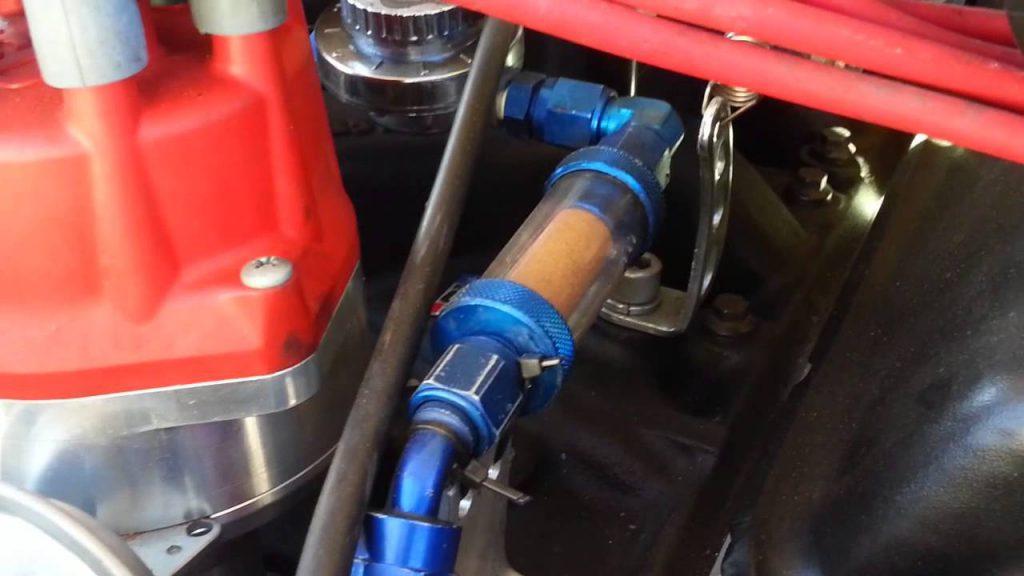
Another option is to retrofit the vehicle with an in-tank electric fuel pump. Most enthusiasts tend to focus on the pressure side of the fuel delivery system when the real problems are more likely located on the low pressure or inlet side of the pump. You might also consider covering the fuel lines and the carburetor in heat shields. Jeff Smith: Vapor lock is a term used to describe when fuel changes from a liquid to a vapor before it arrives at the carburetor. The cookie is set by the GDPR Cookie Consent plugin and is used to store whether or not user has consented to the use of cookies. Vapor Lock Solutions For one, you'll want to make sure the fuel lines are routed away from the exhaust system and other hot components. As this happens, the engine will gradually receive less and less fuel, causing the engine to sputter. As the fuel begins to heat, it creates small bubbles in the fuel system that slowly start to affect the lawn mower’s engine. The cookie is used to store the user consent for the cookies in the category "Performance". Vapor lock on a lawn mower is a gradual process that slowly worsens as the gas builds up. This cookie is set by GDPR Cookie Consent plugin. The cookie is used to store the user consent for the cookies in the category "Other.

The cookies is used to store the user consent for the cookies in the category "Necessary". What Is Vapor Lock Vapor lock occurs when fuel overheats and vaporizes in a fuel line, carburetor, or fuel injector, disrupting the correct air-fuel ratio. Photo courtesy of : : w i n t e r t w i n e d : : on Flickr.
FIX VAPOR LOCK HOW TO
The cookie is set by GDPR cookie consent to record the user consent for the cookies in the category "Functional". What Vapor Lock Is and How to Fix It Dan Ferrell 7:42 PM EDT Vapor lock may prevent your engine from starting. The cookie is used to store the user consent for the cookies in the category "Analytics". These cookies ensure basic functionalities and security features of the website, anonymously. It is the 'deadhead line' to the carb that collects the heat as it passes up along the engine, near the manifolds etc.it seems like this is where circulating and moving the fuel would help cool it, but this fuel has not other route then to the carb.Necessary cookies are absolutely essential for the website to function properly. Up until the fuel separator, the fuel lines are not near any heat source so they shouldn't be too hot anyways. Our engine heat shield sleeves have a built-in, high-temp hook-and-loop fastener system which prevents needing to remove fuel lines and makes installation a breeze. At this point, the return fuel travels back to the tank, and the fuel destined to the carb is in a now 'deadhead line' to the carb. For carb-equipped vehicles, one of the easiest solutions to preventing vapor lock is to use a thermal-barrier sleeve on the lines such as a Thermaflect Sleeve from Heatshield Products. I am not disagreeing with the fact that a return line keeps the fuel cooler by keeping it moving.but really how effective is the stock set up? Let me explain why I ask this.the fuel travels from the tank to the pump, then to the fuel seperator (which is inches away from the pump).

I have been reading these return fuel line threads for a while now with interest, because I am getting ready to reinstall my tank and fuel lines, but I can't get my mind past something. Would not at better system be having a fuel separator near the carb, where only a few inches of 'deadhead' carb fuel remain? Seems logical to me, am I missing something? It is the 'deadhead line' to the carb that collects the heat as it passes up along the engine, near the manifolds etc.it seems like this is where circulating and moving the fuel would help cool it, but this fuel has not other route then to the carb. At this point, the return fuel travels back to the tank, and the fuel destined to the carb is in a now 'deadhead line' to the carb.


 0 kommentar(er)
0 kommentar(er)
